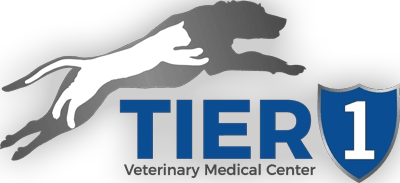Why do dogs eat grass? A question vets get every day with no definitive answer. There are many theories on why your dog may be going green, including instinct, dietary deficiencies, boredom, and underlying illness. Regardless of the cause, eating grass can have serious and potentially dangerous consequences for your dog and should be discouraged. Bottom line: don’t let your dog eat grass.
How Eating Grass Harms Dogs
Grass is rapidly becoming one of the most common foreign bodies we see in dogs. It doesn’t digest; it wads up and gets stuck in the stomach or intestines, posing a lethal threat if not immediately resolved. I have personally surgically removed up to 1lb of grass out of a dog’s digestive tract. The dog survived and did very well, but if not corrected, this could have been disastrous. Unfortunately, in this and many similar situations, a little bit of grass can be life-threatening and have no other solution but surgery with its inherent risks, recovery, and cost. They may be able to pass the grass, and it can make for a comical show in the yard, but it’s not worth the risk, and best to avoid it altogether.
An additional risk with eating grass, especially when dogs go ditch-diving for the really tasty long grass, is foxtails. Strands with backward-facing barbs, similar to porcupine quills, comprise these long, wheat-like purple and green tails. The hairs will stick to the coat, and — like quills — if they contact the skin or gums, will work their way into the tissue and lodge there, dragging in bacteria and irritating the tissue, causing an abscess. The abscess can be lanced and drained appropriately. However, it will continue to return if the offending little fragment is not found and removed. Needle in a haystack? More like a hair in a wound bed.
Why the grass looks greener (or tastier) to your dog:
Dietary Deficiencies
Your dog’s grass eating may be attributed to a dietary deficiency of nutrients, vitamins, or minerals. In this case, dogs tend to display a behavior known as Pica: eating inappropriate things, including dirt, rocks, grass, and other things they shouldn’t, trying to supplement their diet. Consider this possibility, especially if your dog lacks a properly balanced diet. Discuss with your veterinarian if you think this may be the case.
Fiber Increase
Some dogs may eat grass to increase dietary fiber to improve gut motility and firm up bowel movements. However, there are better, safer ways to supplement dietary fiber that don’t carry the same risks as nibbling your lawn.
Inherited Habit
Some experts speculate that eating grass is an inherited bad habit that goes way back to dogs’ evolution from wild dogs. Wild dogs were omnivores who ate their entire kill, including the intestinal contents of an animal, thereby supplementing fiber and other essential nutrients. This food had already been heavily chewed and exposed to the prey’s digestive tract whose intestinal biome is situated to digest grass and other vegetation. Dogs lack the bacteria and enzymes to digest grass; therein lies the snag.
Illness or Nausea
My understanding for years was that dogs ate grass to settle their stomachs or make them vomit. However, studies consistently show that less than 10% of dogs eating grass were ill (or at least showing signs of it) before eating grass. Furthermore, they are not very likely to regurgitate their stomach contents because less than 30% of dogs who eat grass vomit afterward.
Boredom
Eating grass may be a behavioral oddity of some dogs. These critters may need more exercise, attention, or stimulation. You can implement corrective training and redirect their attention with treats for the food-motivated pups, with a brief reprimand for undesirable behavior (eating grass) and praise and treats for good behavior (when they stop). Also, consider providing them with more regular exercise. Take them for a walk or a good vigorous session with a ball or their favorite toy. You can also try stimulating their mind with puzzle-treat toys or a training program suited for their breed like agility, fly ball, herding, or bird dog training.
What to Do If Your Dog Is Eating Grass
If your dog eats grass like it’s going out of style, it may be time to check in with the vet and make sure there isn’t something more concerning going on. If you need to up your dog’s fiber intake, try frozen or fresh green beans, canned pumpkin, or change up their diet. Every bag of dog food lists the fiber content. You may need to remind them that they are not a wild animal, throw the ball around a bit more, or offer them a new challenge with a training or skill course. Do not let your dogs eat grass.
Tier 1 Veterinary Medical Center in Palmer is Alaska’s only comprehensive animal hospital. We are available by appointment, in addition to accepting emergencies and walk-ins. With CT, MRI, and Ultrasound available on-site, our facility provides advanced treatment options for your pet. Contact us today to schedule an appointment.
